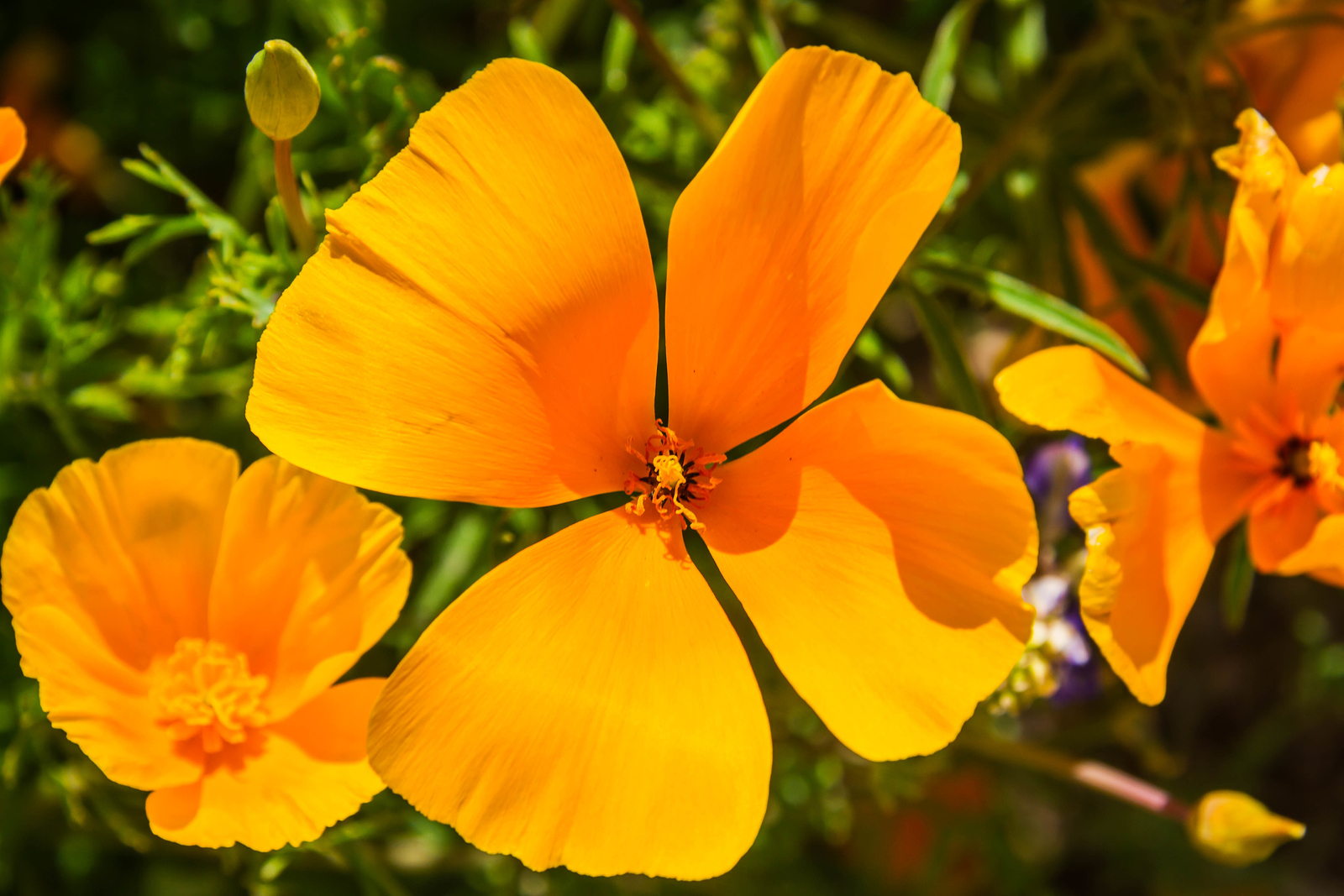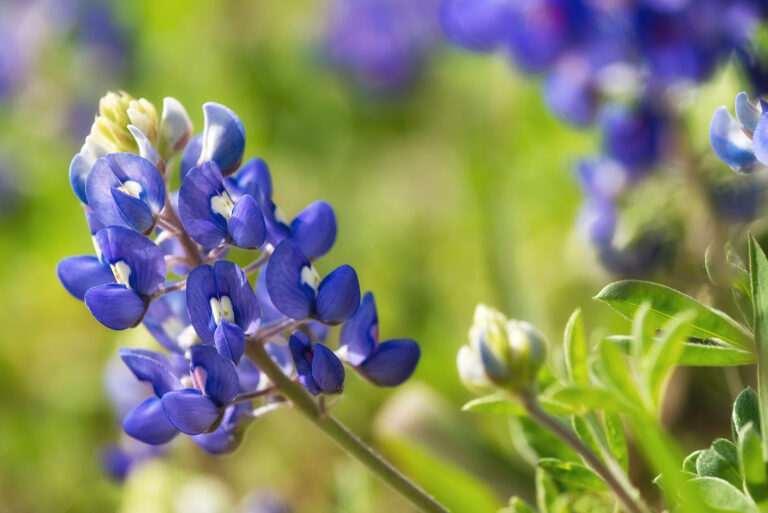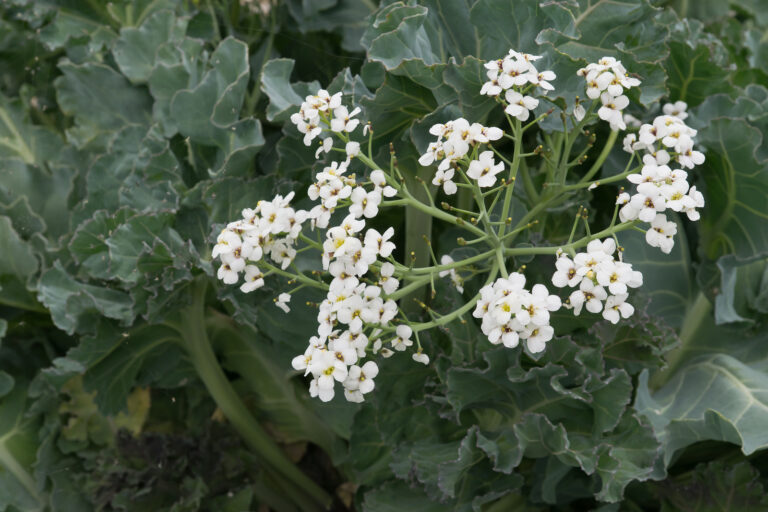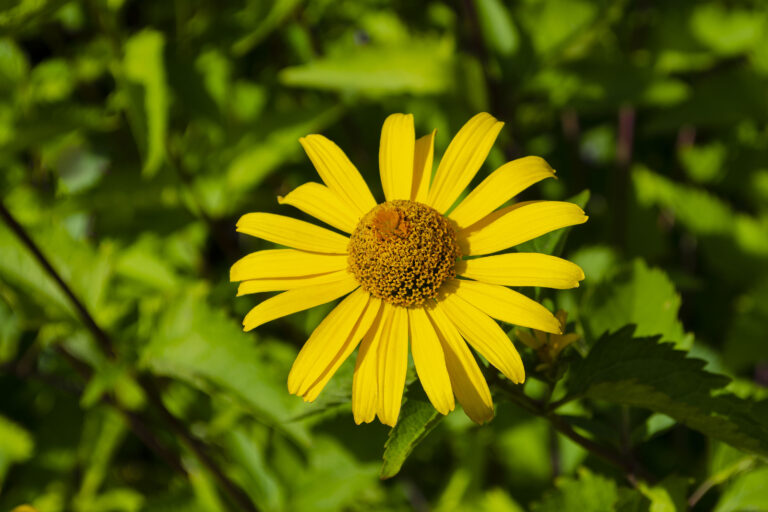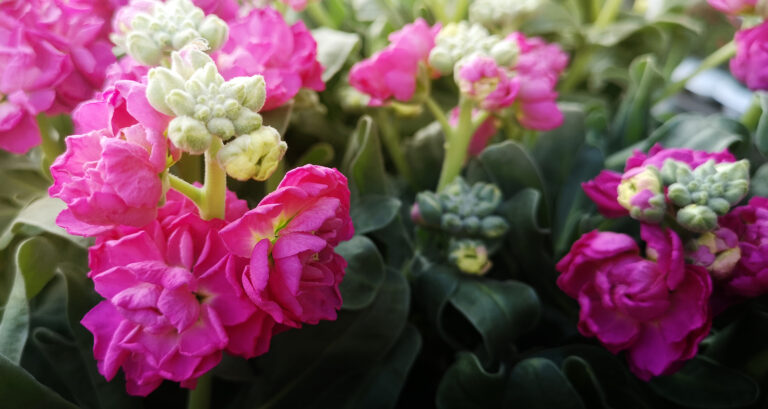How to Grow California Poppy — Eschscholzia
Eschscholzia is a perennial wildflower native to western North America. It bears brilliant red, pink, yellow, or gold cup-shaped flowers on flexible stems above finely divided fernlike leaves.
There are 8 to 10 species of Eschscholzia. Perhaps the most popular is commonly called California poppy which grows wild on hillsides and along roads in the western United States.
Eschscholzia is commonly grown as an annual. It easily reseeds and so will appear again and again where it has grown in the past.
Garden Success Products at Amazon:
- 10 pcs Stainless Steel Garden Hand Tool Set
- Flexi Hose with 8-inch Nozzle
- Gorilla Cart 4 Cu. Ft, 300-pound Capacity
- Neem Bliss 100-% Cold Pressed Neem Oil
- Safer Brand Insect Killing Soap
- Wildflower Seed Mix Attracts Hummingbirds and Butterflies
- Eden Brothers All Perennial Seed Mix
It is best to sow seeds where plants are to grow. Eschscholzia can be started indoors or in seedbeds but the taproots are brittle making it difficult to transplant easily.
Eschscholzia is a genus of about 10 species of slender annuals and perennials native to open space in Western North America.
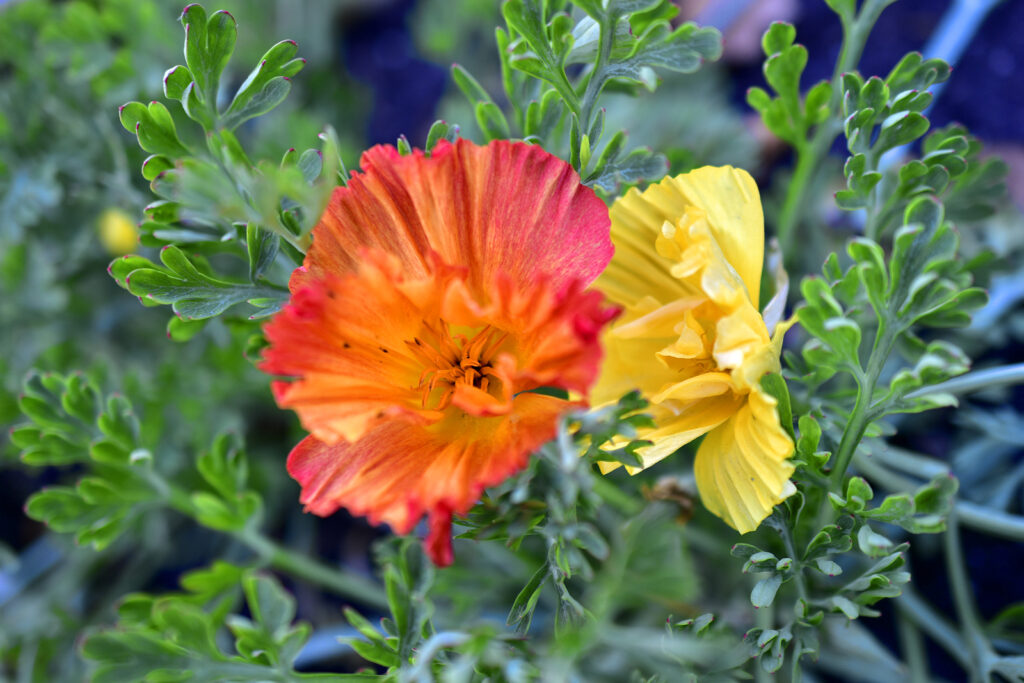
Get to know Eschscholzia
- Plant type: Perennial
- Growing Zones and range: Zones 7 to 11
- Hardiness: Tender–will die back when the frost comes then reemerge in spring
- Height and width: 6 to 24 inches (15-60cm) tall and wide
- Foliage: Finely-divided, fern-like, light to blue-green leaves
- Flowers: 4-petaled flowers to 3 inches (15cm) wide; colors are orange, yellow, cream, and white; also red, pink, and violet.
- Bloom time: Spring to summer
- Uses: Mixed flower border and beds, cottage gardens, meadow gardens, rock gardens, wildlife gardens; grows well in containers
- Common name: California Poppy
- Botanical name: Eschscholzia spp.
- Family: Papaveraceae
- Origin: Western North America
Where to plant Eschscholzia
- Grow Eschscholzia in full sun.
- Eschscholzia grows in average to sandy soil that is well-drained. Rich soil yields abundant foliage but few flowers.
- Eschscholzia prefers neutral soil pH of 7.0 to 7.5; it dislikes acidic soil.
Eschscholzia uses
- Eschscholzia can be naturalized to cover a sunny hillside or for planting in a dry rock garden.
- Grow Eschscholzia in a border.
- Eschscholzia attracts birds.
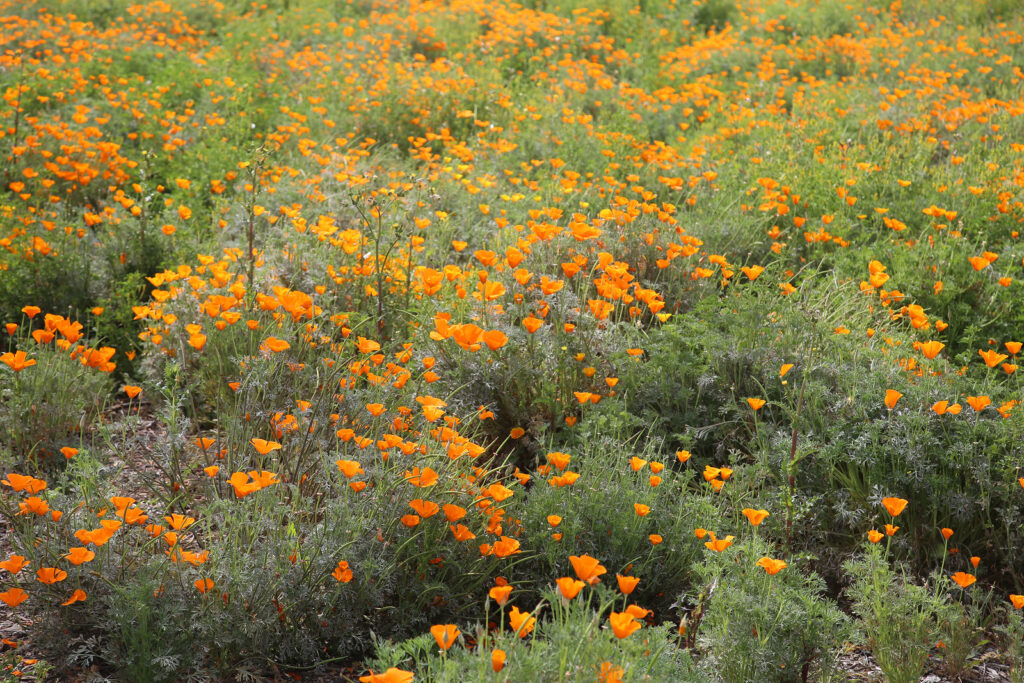
When to plant Eschscholzia
- Sow seeds or set container-grown Eschscholzia in the garden in early spring for early summer bloom; in Zones 7-11 sow seed outdoors in fall for spring bloom.
- Eschscholzia is best started where it will grow; it does not transplant well. Seeds can be started indoors 2 to 3 weeks before the last spring frost in individual pots.
Planting and spacing Eschscholzia
- Sow seeds indoors in small pots or six-packs in sterile seed starting medium.
- Germination takes 1 to 3 weeks at 60° to 65°F (15.6°-18°C).
- Transplant with care; direct sowing is generally best to prevent root damage.
- Space Eschscholzia 6 to 12 inches (15-30cm) apart.
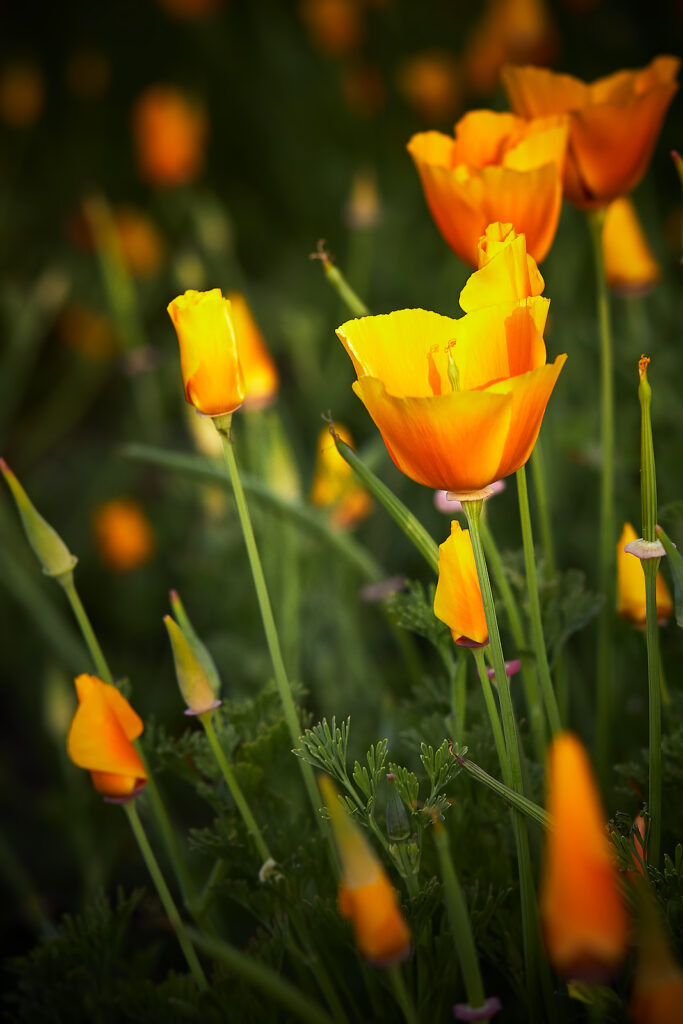
How to water and feed Eschscholzia
- Moderate moisture is acceptable for Eschscholzia; mature plants are drought-tolerant.
- It is not necessary to feed Eschscholzia. Fertilizer should be applied sparingly if at all.
Eschscholzia care
- Extend the bloom time by deadheading spent blooms.
Eschscholzia pests and diseases
- California poppies usually resist most pests and diseases.
Eschscholzia propagation
- California poppies easily reseed. Seeds germinate in 7 to 14 days.
- In warm-winter regions, Eschscholizia self-sows and come up year after year.
- Remove plants after blooming to prevent self-sowing.
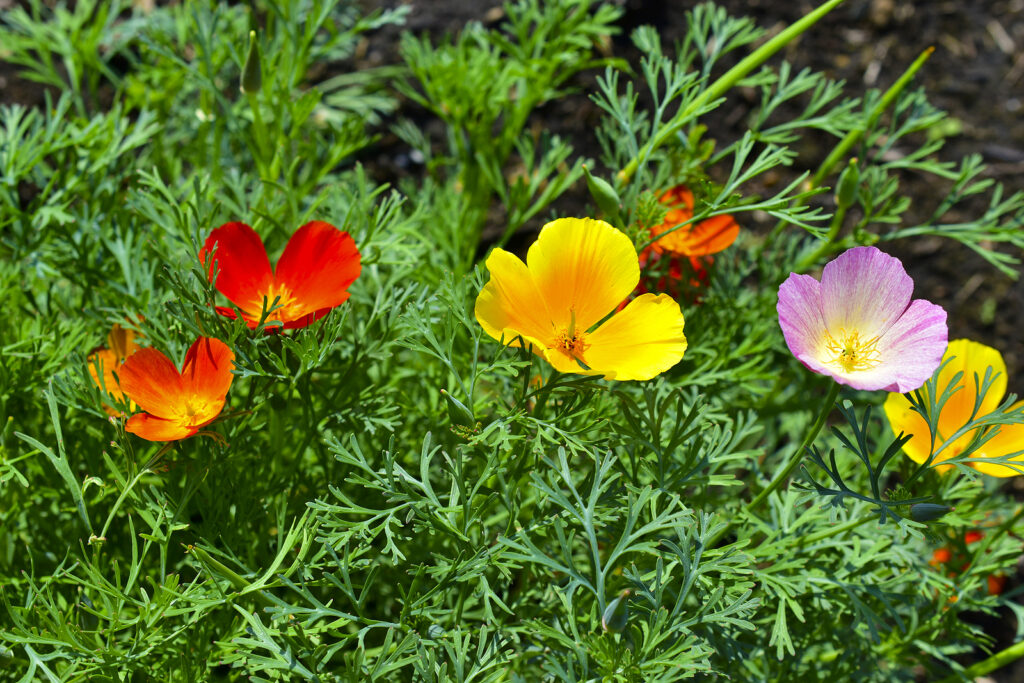
Eschscholzia varieties to grow
- Eschscholzia californica, California poppy. Grows 8 to 12 inches (20-30cm) tall; well-branched, mat-forming annual or short-lived perennial; bears showy 3-inch wide flowers in orange, yellow, or red; flowers close in cloudy weather.
- Most cultivars are single flowers. Garden cultivars of various colors usually revert to the orange or yellow of wild species when they reseed.
- ‘Ballerina’ has semi-double flowers with frilled and fluted petals.
- ‘Mission Bells’ series have semi-double flowers ranging from cream to orange.
- Thai Silk series has single and semi-double flowers with ruffled petals in shades of red, pink, yellow, or orange.
California Poppy frequently asked questions
Q: How can I start a California poppy from seed?
A: California poppy seeds can be started indoors two to three weeks before the last spring frost. Sow them in peat pots to avoid disturbing the roots when transplanting the seedlings after the last frost.
Q: When should I sow California poppy seeds outdoors?
A: California poppies are commonly direct-sown outdoors after the last frost in spring. In mild winter regions, you can sow seeds from autumn through early spring. Sow them in the place they will remain; they are tap-rooted and dislike transplanting.
Q: What are the best growing conditions for California poppy?
A: The best planting location for California poppies is sandy, slightly alkaline soil in full sun. They will tolerate poor and dry soils as well. Treat them as annuals that will bloom best during cool weather.
Q: A bicolor California poppy grew voluntarily in my garden and I saved the seeds. Two years later, I only have orange poppies. What happened?
A: You can purchase California poppy seeds for flowers that bloom white, red, orange, or bicolor. But the plants almost always revert to orange. Also, double-flowered forms eventually revert to single flowers.
Related Articles:

